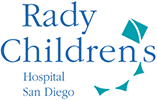A to Z Symptom: Seizure
May also be called: Febrile Seizures; Generalized Seizures; Absence Seizures; Tonic-Clonic Seizures; Atonic Seizures; Myoclonic Seizures; Focal Seizures
What's a Seizure?
A seizure (SEE-zhur) is unusual electrical activity in the brain that can cause changes in behavior, movement, or feelings. A person may stare into space or have jerking movements in part of the body or the whole body. Some people may show no signs at all. After a seizure, a person may feel confused, tired, have a headache, or have other symptoms.
A child can have one seizure and never have another one again. Epilepsy is when someone has repeated seizures. Some kids outgrow epilepsy.
What Causes Seizures?
Normally, electrical activity in the brain happens when neurons (nerve cells) in different areas of the brain send signals at different times. During a seizure, many neurons fire all at once.
The most common type of seizure in children is caused by a fever (called a febrile seizure). Other causes include infections, low blood sodium, medicines, drug use (amphetamines or cocaine), brain injury or a tumor, and genetic changes. Sometimes, a seizure's cause is never found.
How Are Seizures Treated?
How doctors treat seizures depends on their cause (if known) and the type of seizure. Some won’t need any treatment. Medicines can help with many types of seizures. If medicine doesn’t work, other treatments are available.
What Else Should I Know?
Seizures can be frightening, but most last only a few minutes, stop on their own, and are not life-threatening.
All A to Z dictionary entries are regularly reviewed by KidsHealth medical experts.

© 1995- The Nemours Foundation. KidsHealth® is a registered trademark of The Nemours Foundation. All rights reserved.
Images sourced by The Nemours Foundation and Getty Images.
